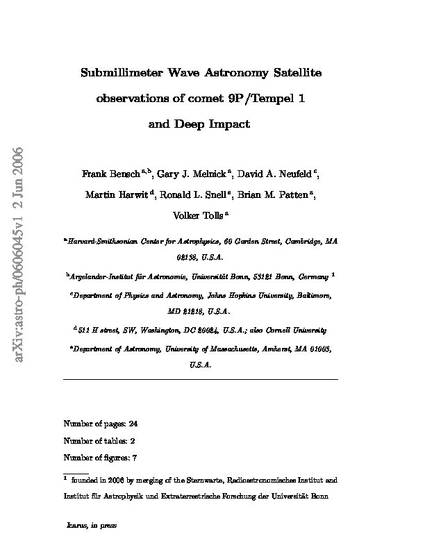
On 4 July 2005 at 5:52 UT the Deep Impact mission successfully completed its goal to hit the nucleus of 9P/Tempel 1 with an impactor, forming a crater on the nucleus and ejecting material into the coma of the comet. NASA's Submillimeter Wave Astronomy Satellite (SWAS) observed the 110–101 ortho-water ground-state rotational transition in Comet 9P/Tempel 1 before, during, and after the impact. No excess emission from the impact was detected by SWAS and we derive an upper limit of 1.8×107 kg on the water ice evaporated by the impact. However, the water production rate of the comet showed large natural variations of more than a factor of three during the weeks before and after the impact. Episodes of increased activity with alternated with periods with low outgassing (). We estimate that 9P/Tempel 1 vaporized a total of N4.5×1034 water molecules (1.3×109 kg) during June–September 2005. Our observations indicate that only a small fraction of the nucleus of Tempel 1 appears to be covered with active areas. Water vapor is expected to emanate predominantly from topographic features periodically facing the Sun as the comet rotates. We calculate that appreciable asymmetries of these features could lead to a spin-down or spin-up of the nucleus at observable rates.
Available at: http://works.bepress.com/ronald_snell/17/
